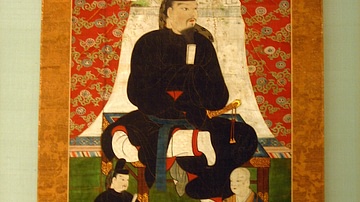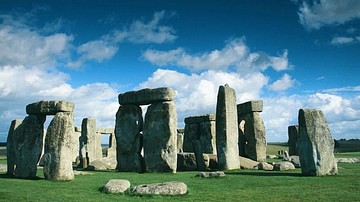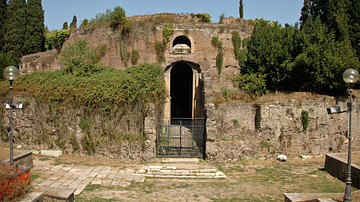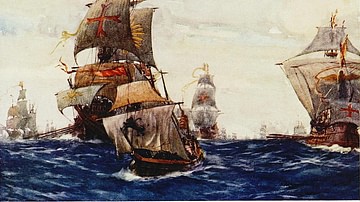Search
Did you mean: Elam?
Search Results

Image
Fujiwara no Kamatari
A 16th century CE silk scroll depicting Fujiwara no Kamatari (614-669 CE) and his two sons, the founder of the powerful Fujiwara clan which dominated Japanese government during the Heian Period (794-1185 CE). (Los Angeles County Museum of...

Image
Armadale Castle, Isle of Skye, Scotland
Armadale Castle was the family seat of the Clan MacDonald. The 19th-century manor house was destroyed by fire, and its ruins are located on the Sleat peninsula, Isle of Skye, Scotland.

Article
The Family in Ancient Mesopotamia
Family in ancient Mesopotamia was considered the essential unit that provided social stability in the present, maintained traditions of the past, and ensured the continuance of those traditions, customs, and stability for the future. The...

Article
Buddhism in Ancient Japan
Buddhism was introduced to ancient Japan via Korea in the 6th century CE with various sects following in subsequent centuries via China. It was readily accepted by both the elite and ordinary populace because it confirmed the political and...

Article
The Twelve Tribes of Israel
The Twelve Tribes of Israel refer to the sons of the Jewish Patriarch Jacob and are important for the tribal lineages of those who constituted the nation of Israel. In the ancient world, all ethnic groups developed stories of their ancestors...

Article
The Vikings in Iceland
The medieval sources on the discovery and settlement of Iceland frequently refer to the explorers as “Vikings” but, technically, they were not. The term “Viking” applies only to Scandinavian raiders, not to Scandinavians generally. Some of...

Article
The Stonehenge Burials
A great deal has been written about why the prehistoric monument of Stonehenge, in Wiltshire, southern England, was constructed. Perhaps it was designed as a temple to the ancestors, an astronomical calendar, a healing centre or a giant computer...

Article
Mausoleum of Augustus
The Mausoleum of Augustus was actually one of the first of many large building projects undertaken in the reign of Rome's first emperor. When the Mausoleum was completed in 28 BCE, it was easily the biggest tomb in the Roman world, a record...

Article
Poor Man of Nippur
The Poor Man of Nippur (c. 701 BCE) is a Babylonian poem on the themes of the obligations of hospitality and revenge for an undeserved injury. A poor man of the city of Nippur feels mistreated when he visits the mayor and then goes to great...

Article
The Extraordinary Journey of David Ingram
David Ingram was an Elizabethan explorer who famously walked over 3500 miles from Veracruz to New Brunswick in 1568-9. In 1567, Ingram had sailed down the Thames on the flagship Queen Elizabeth I of England (r. 1558-1603) had loaned John...